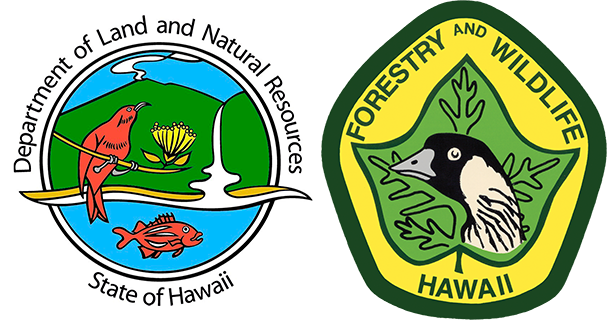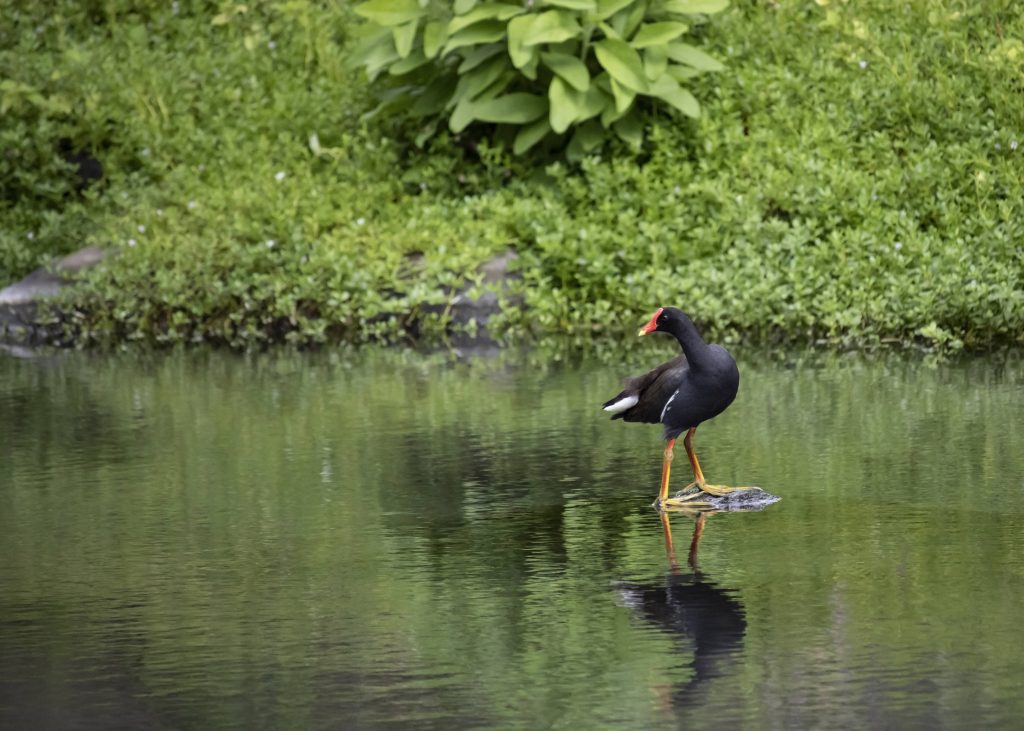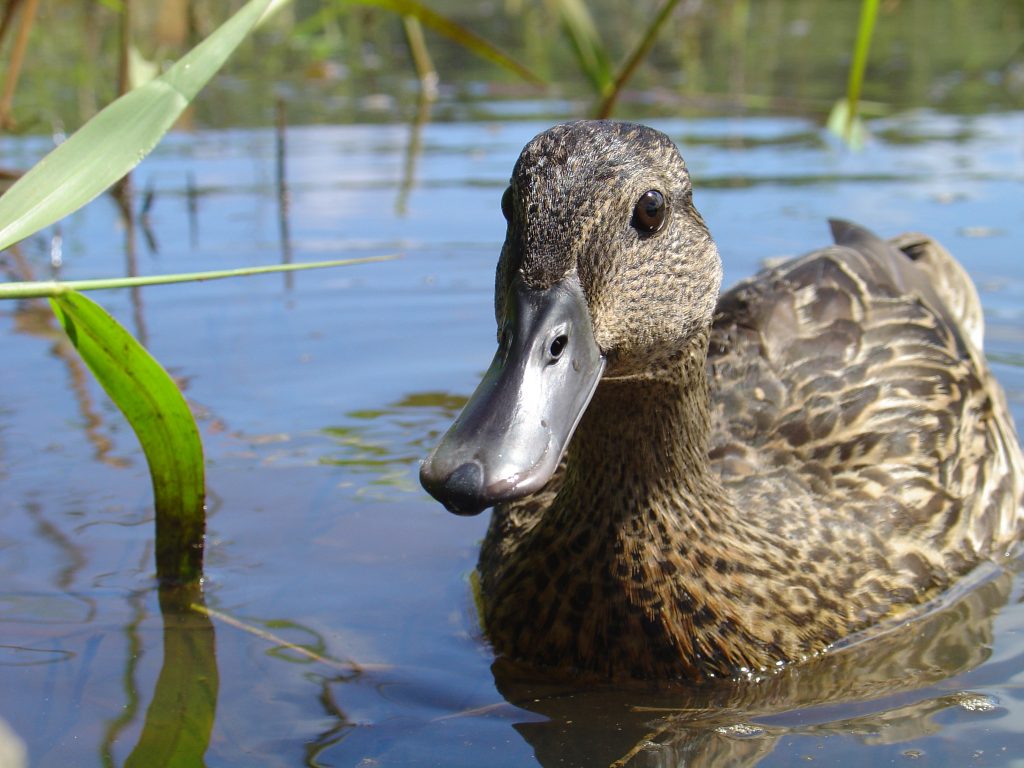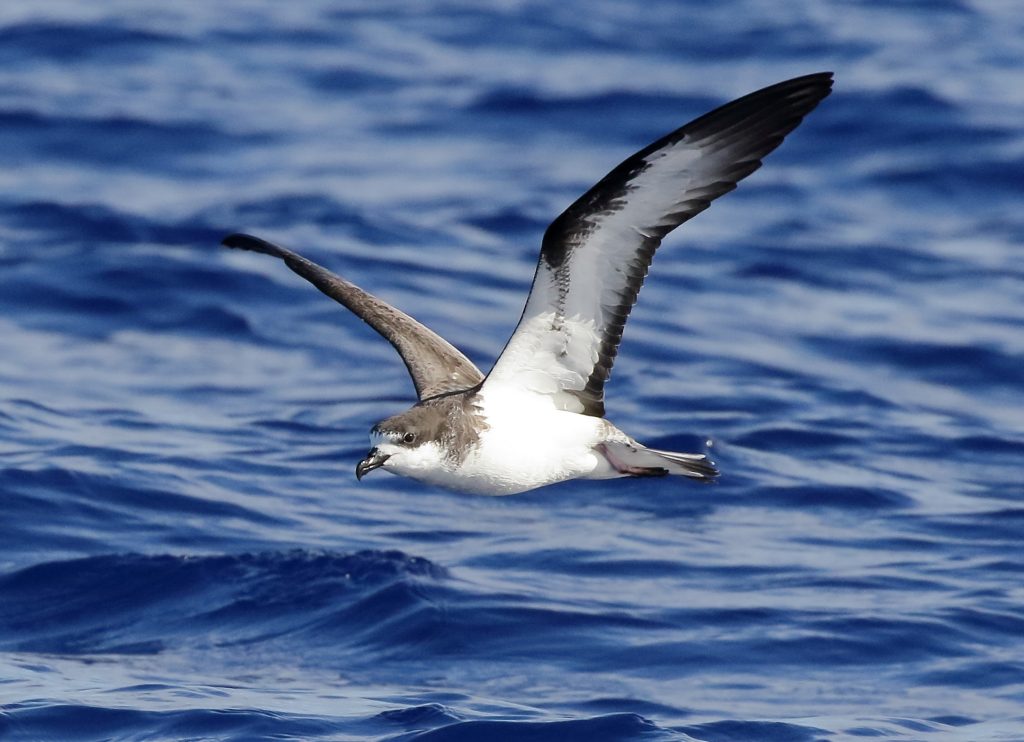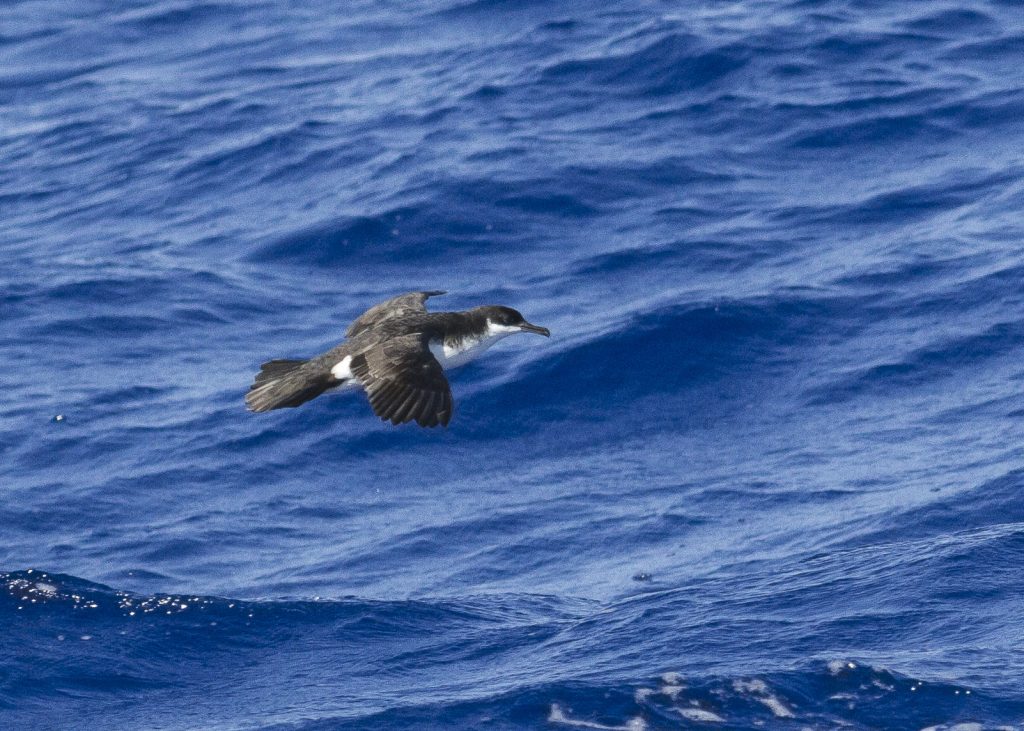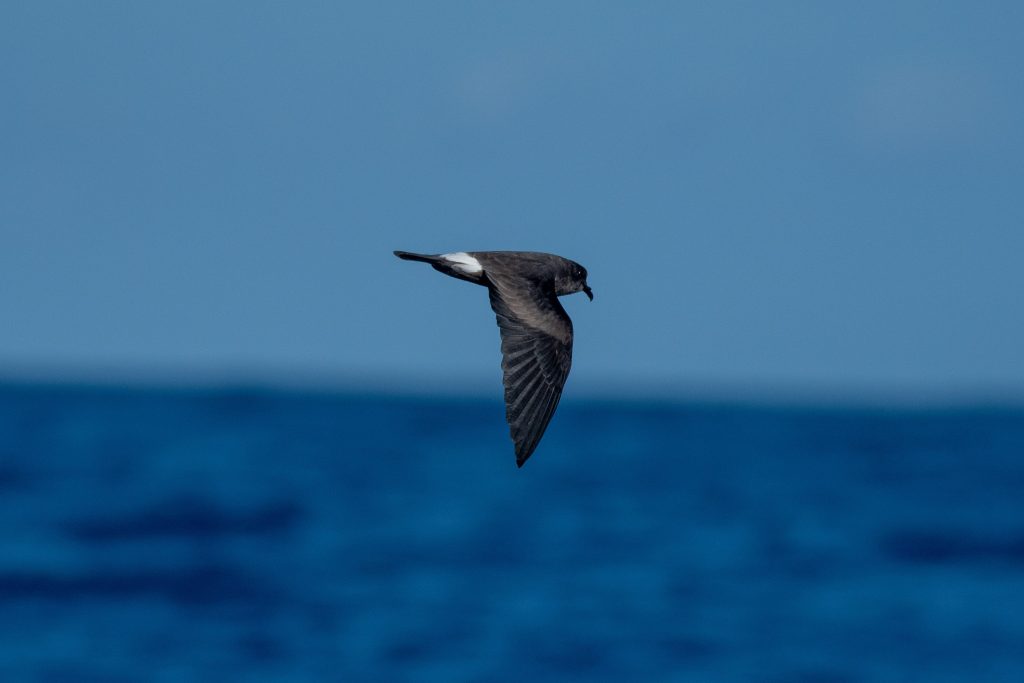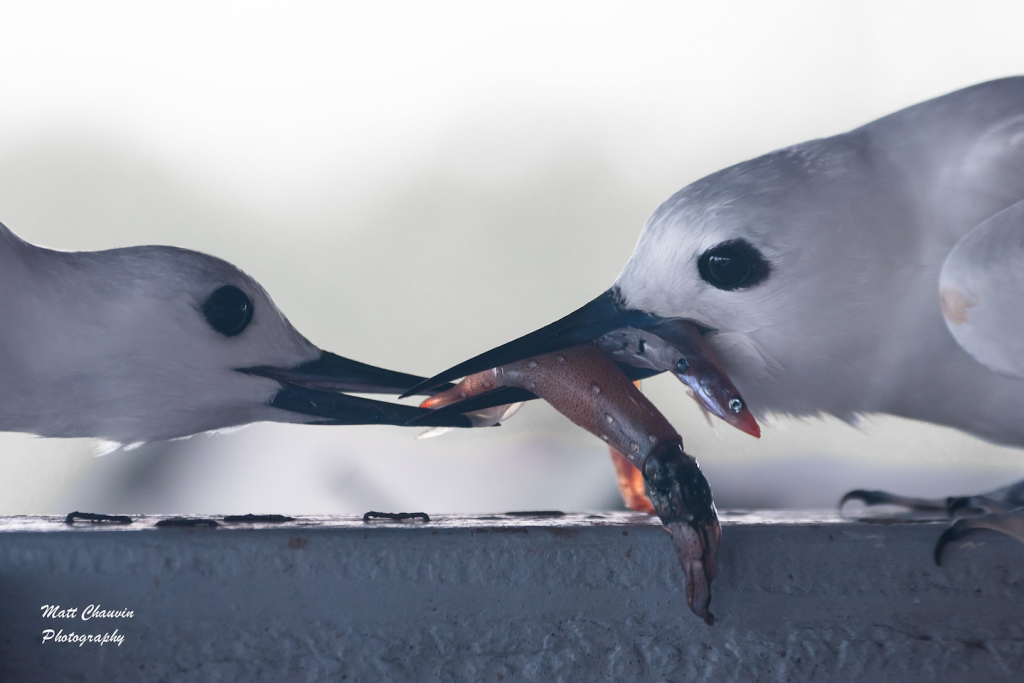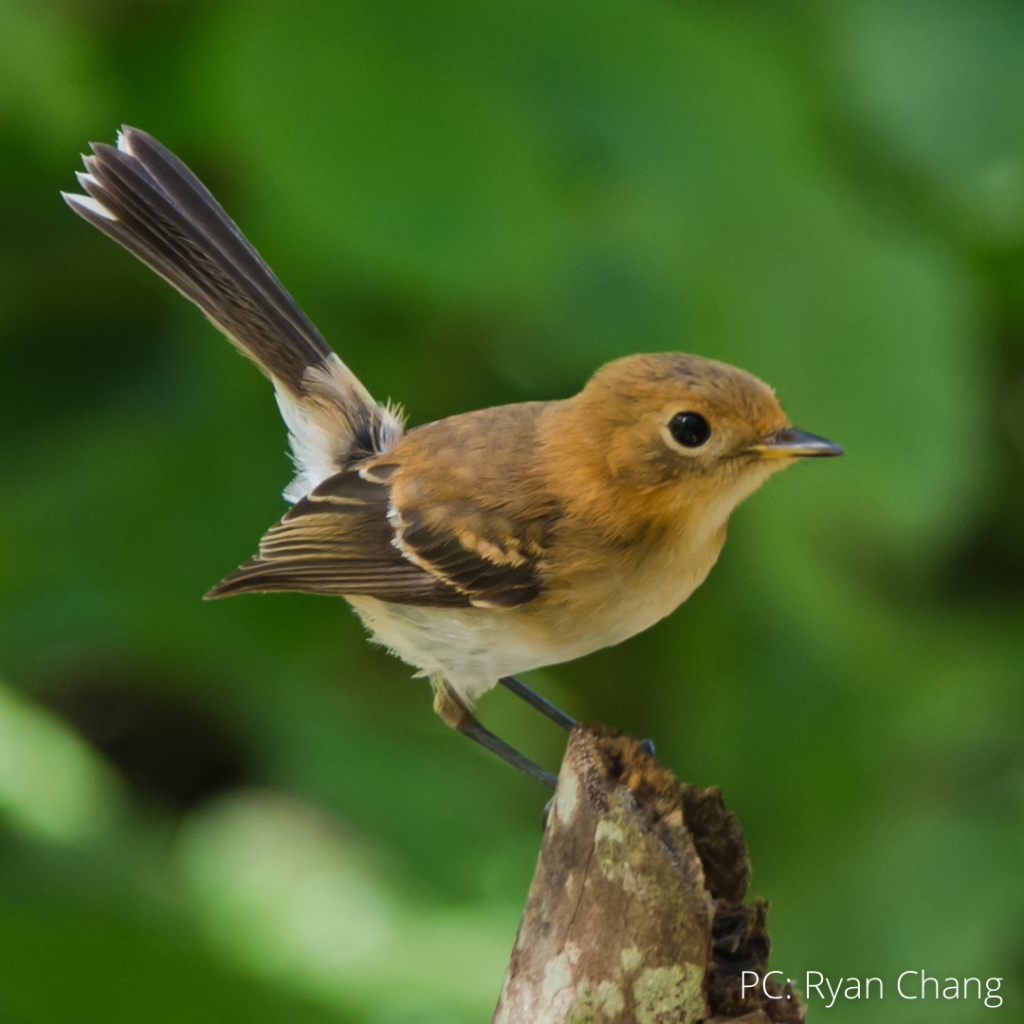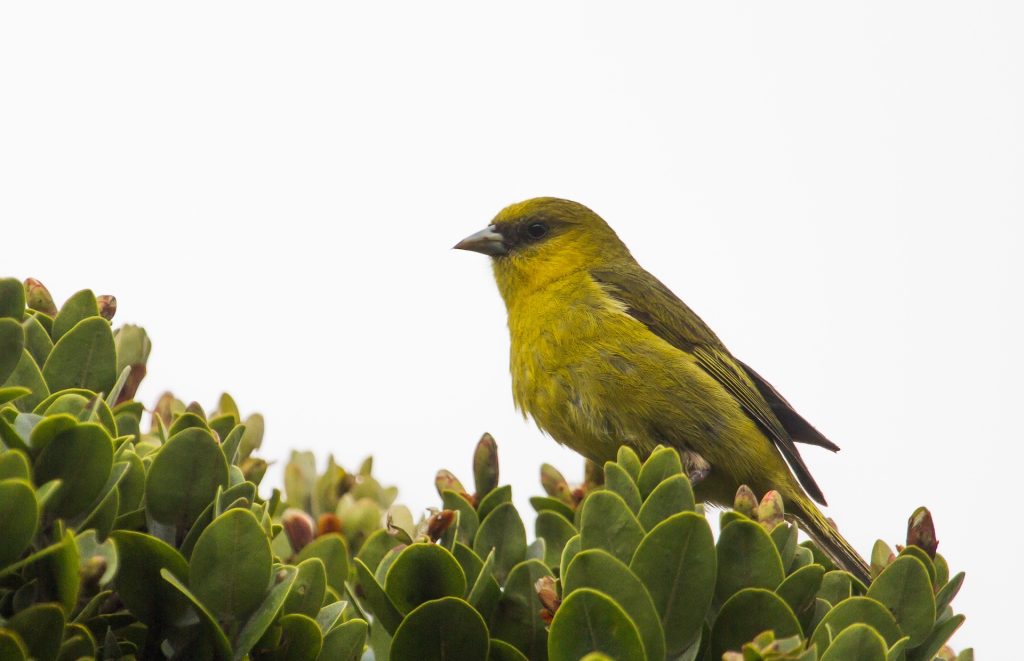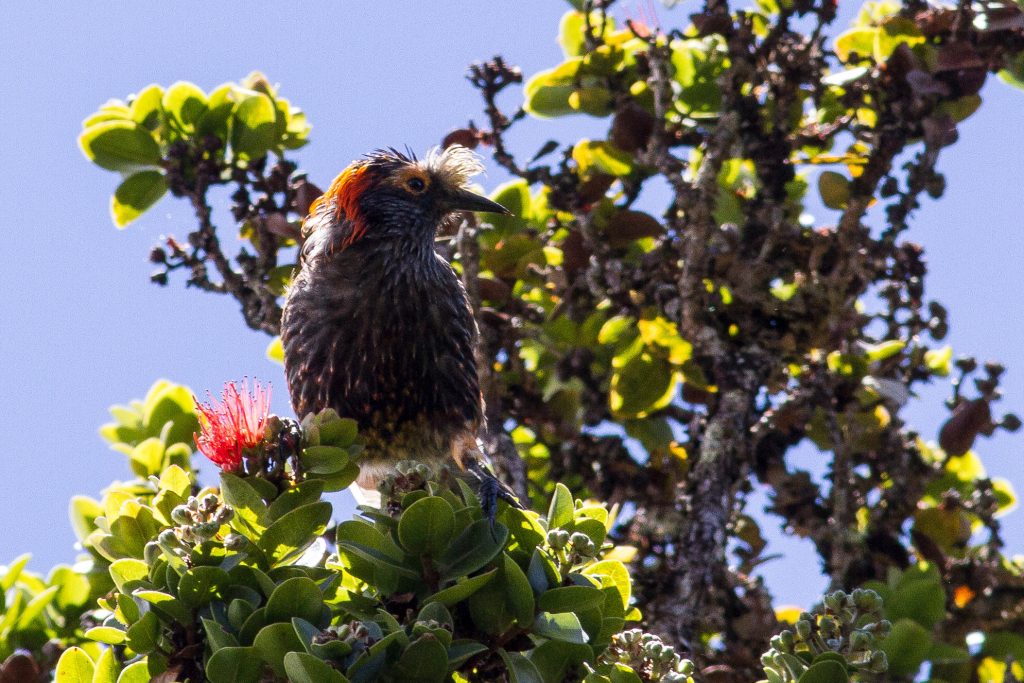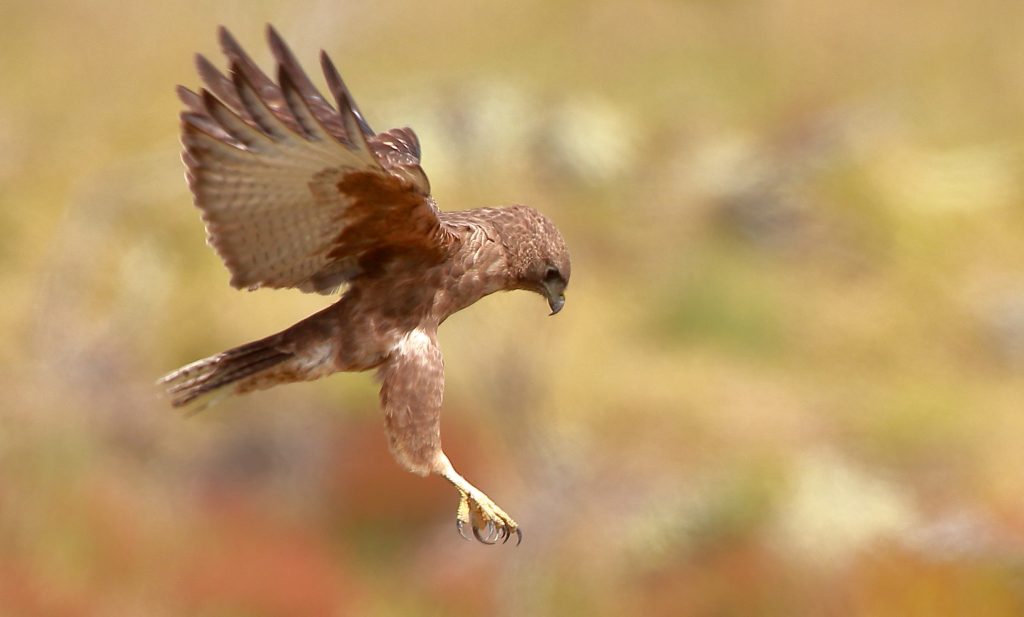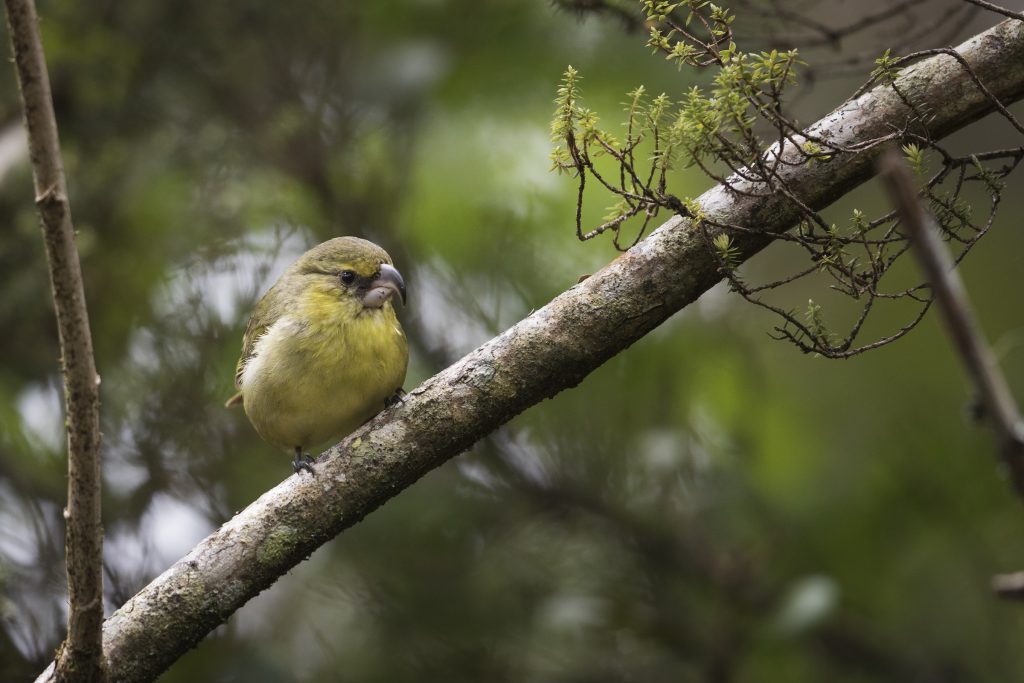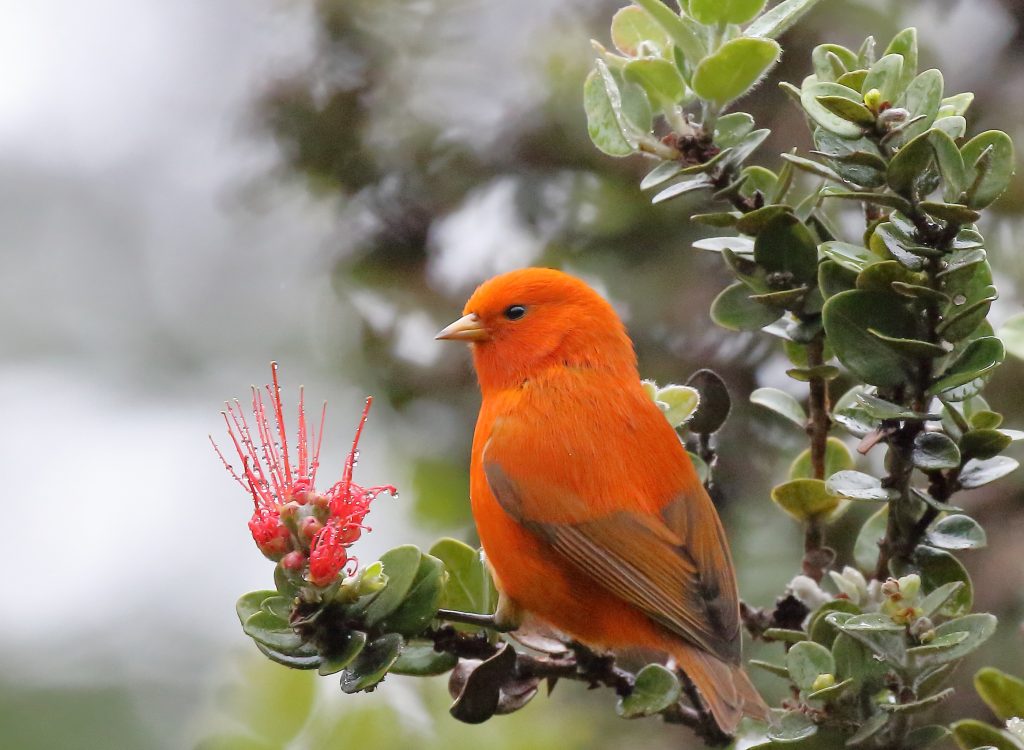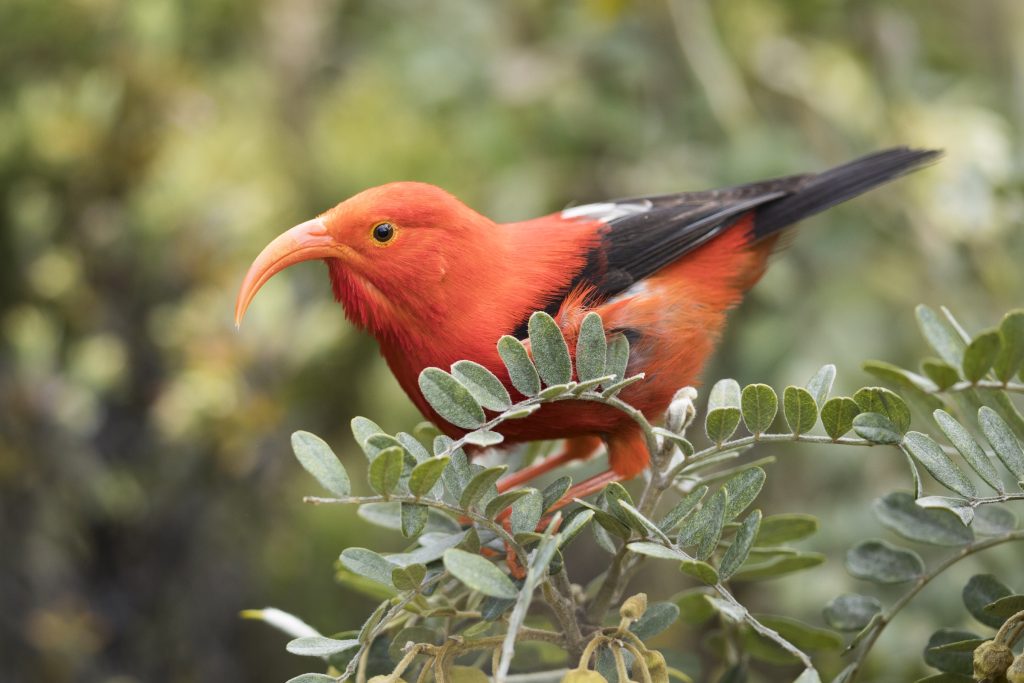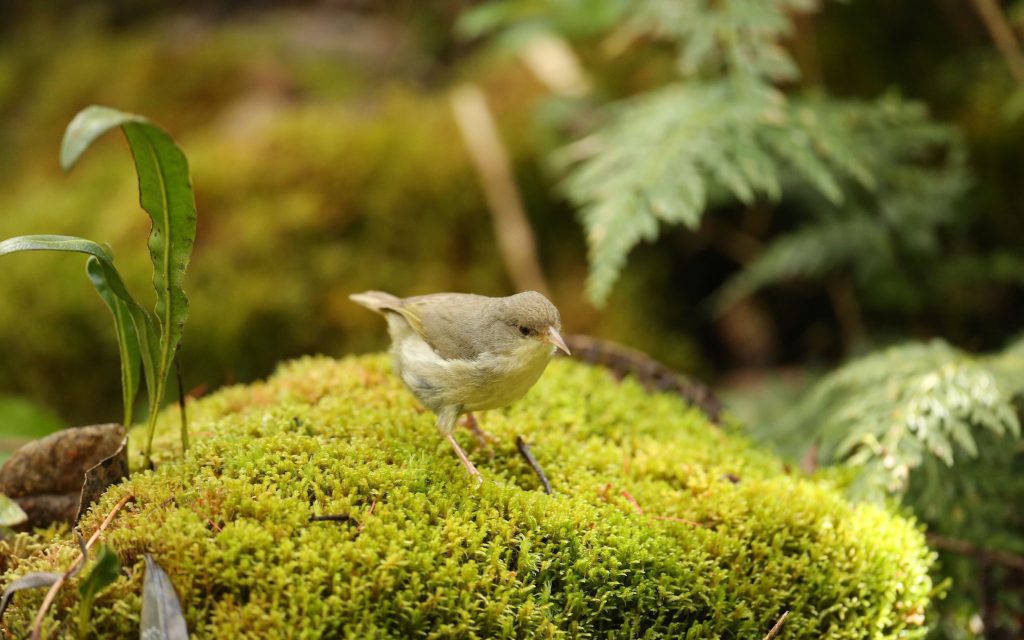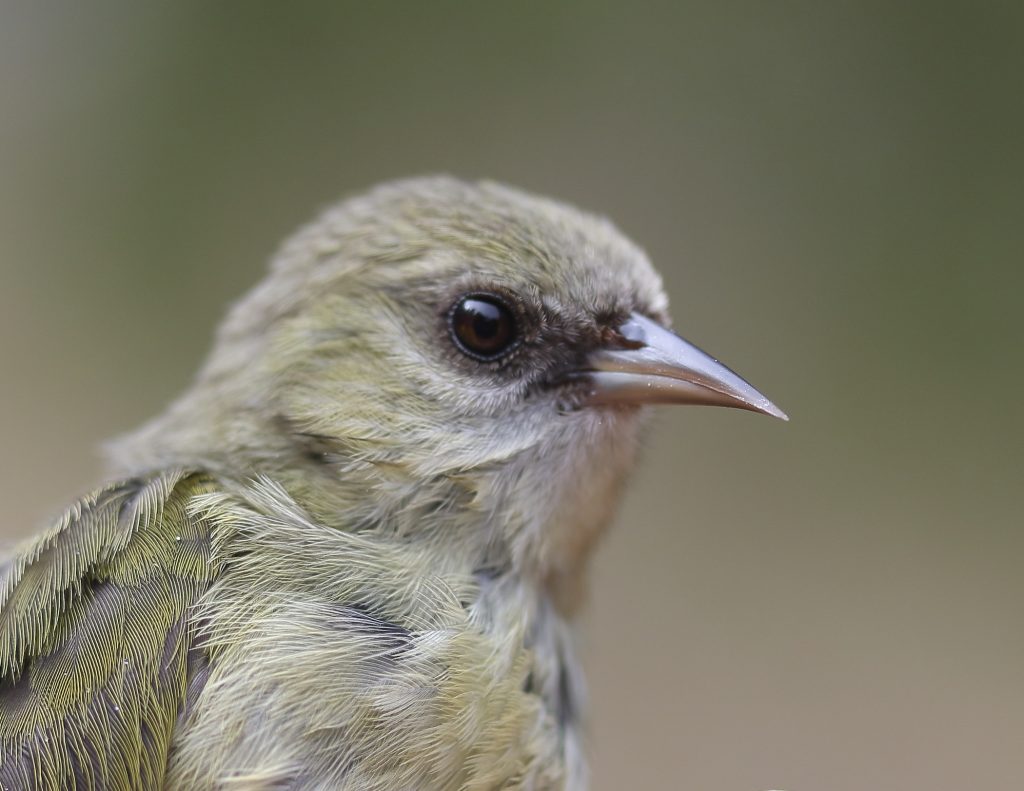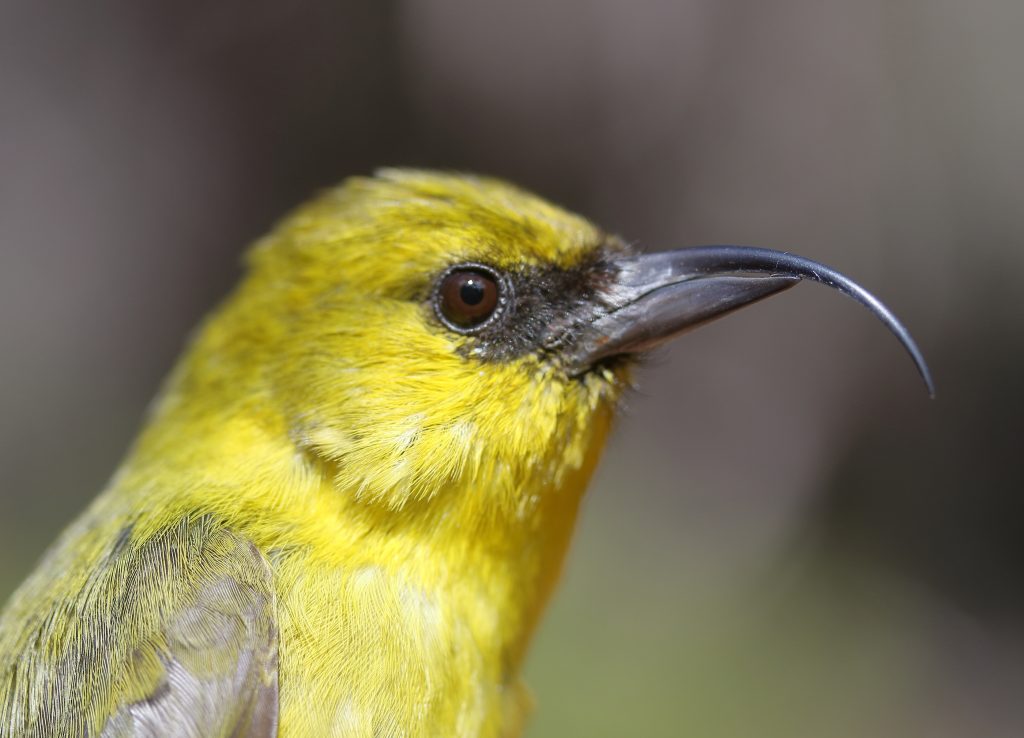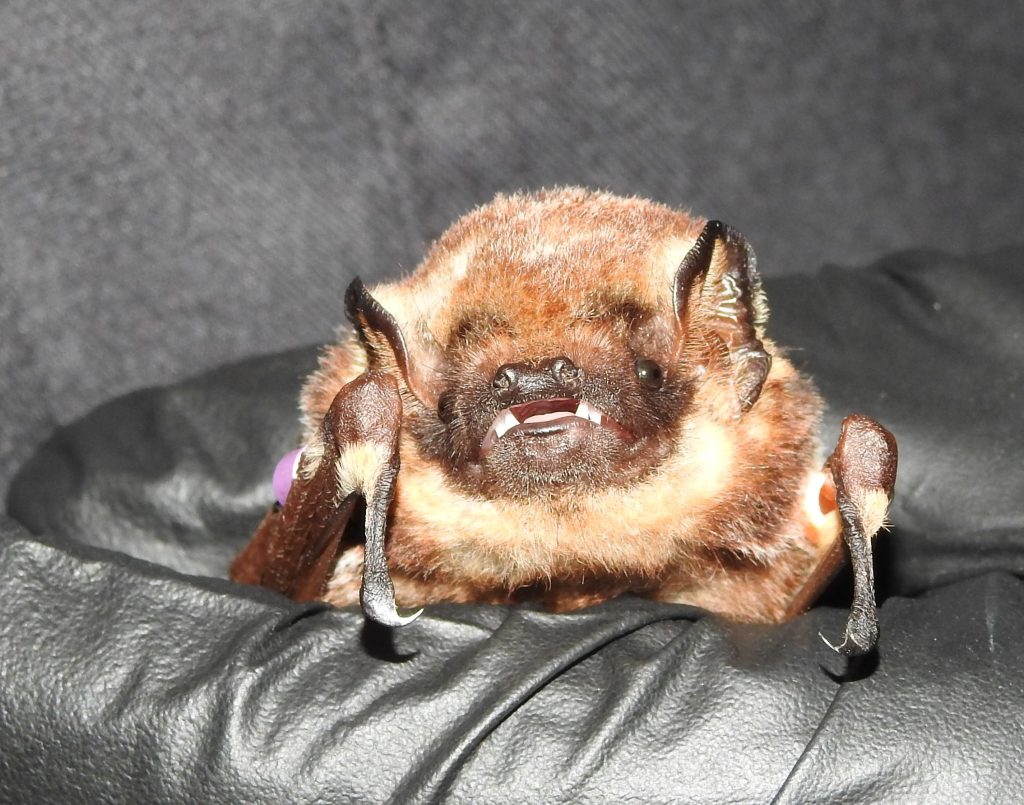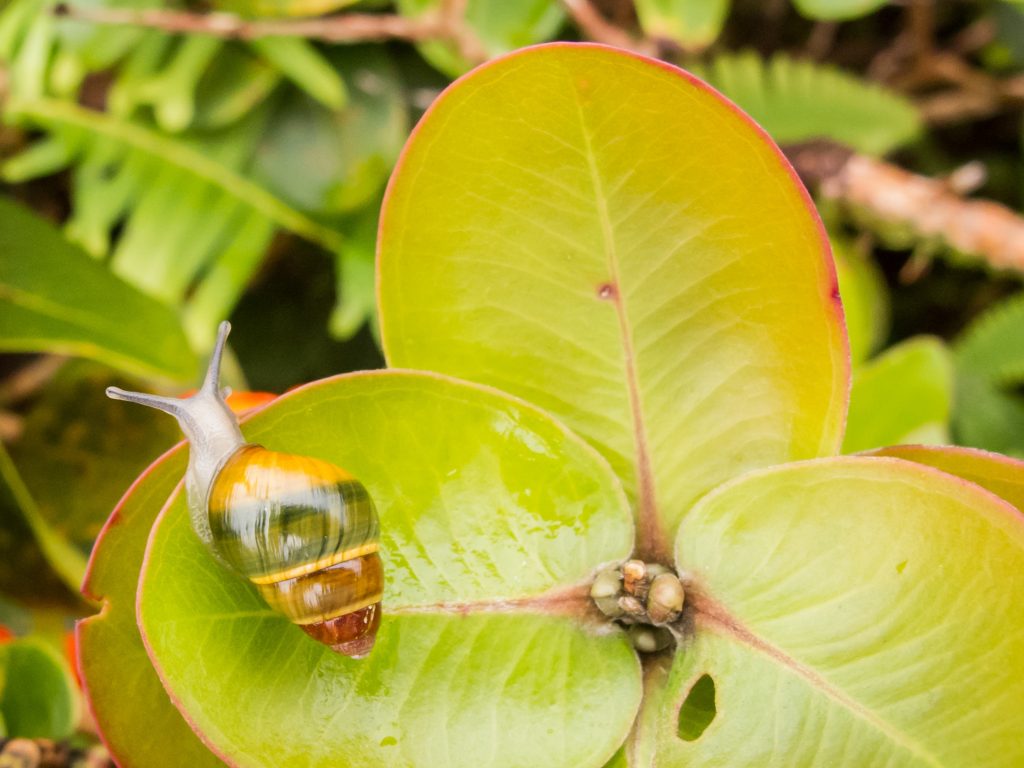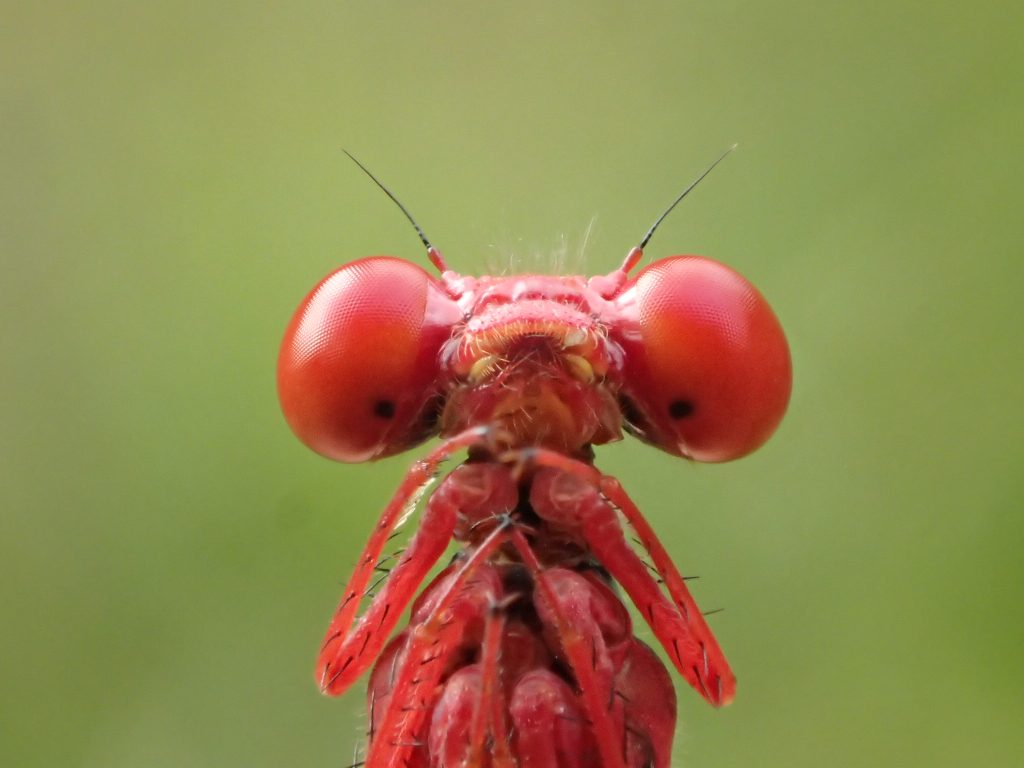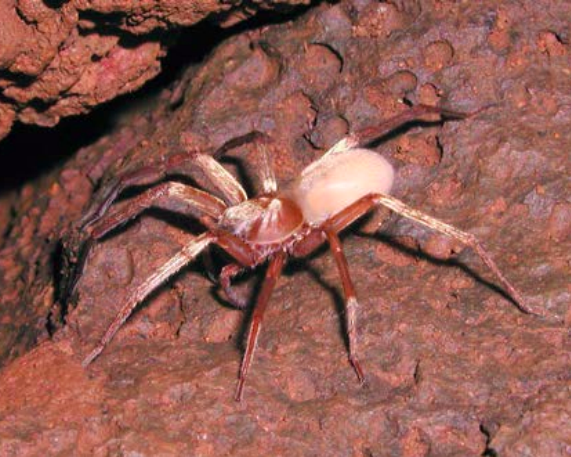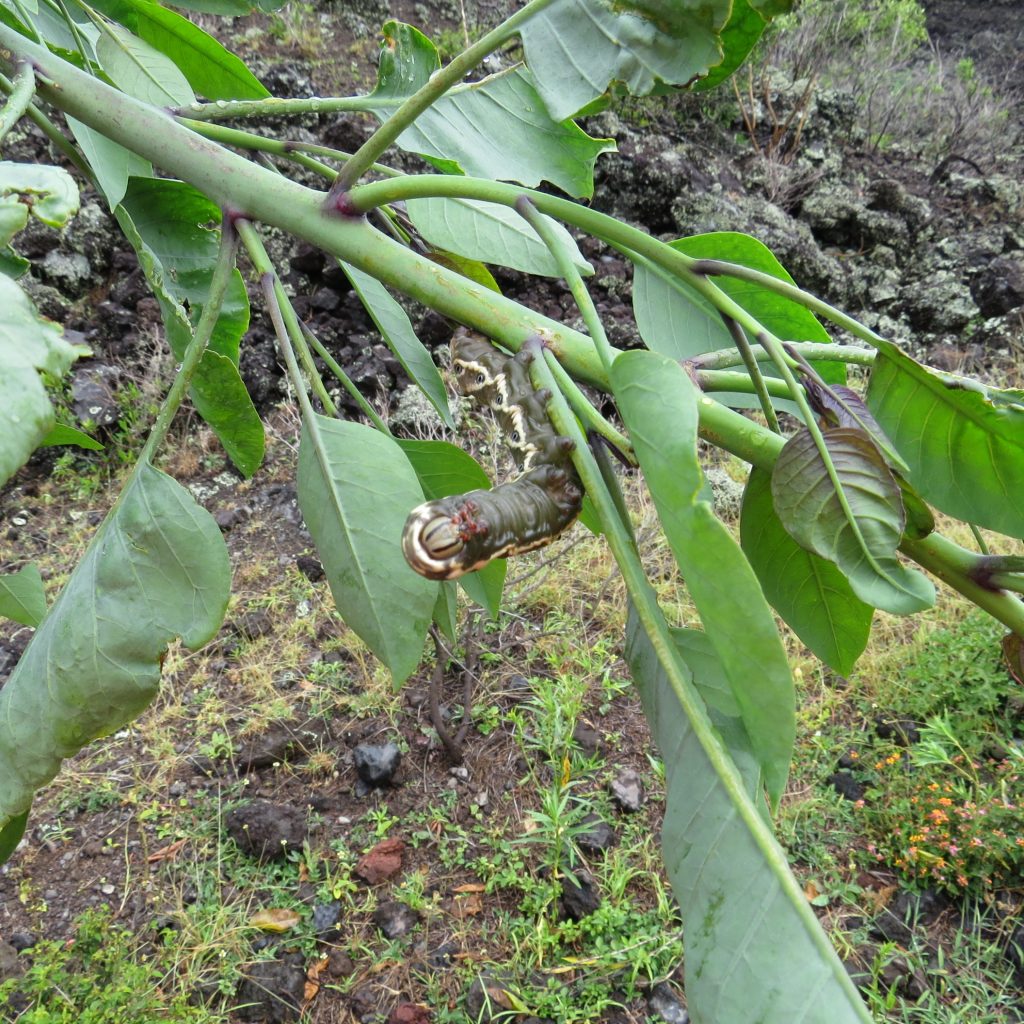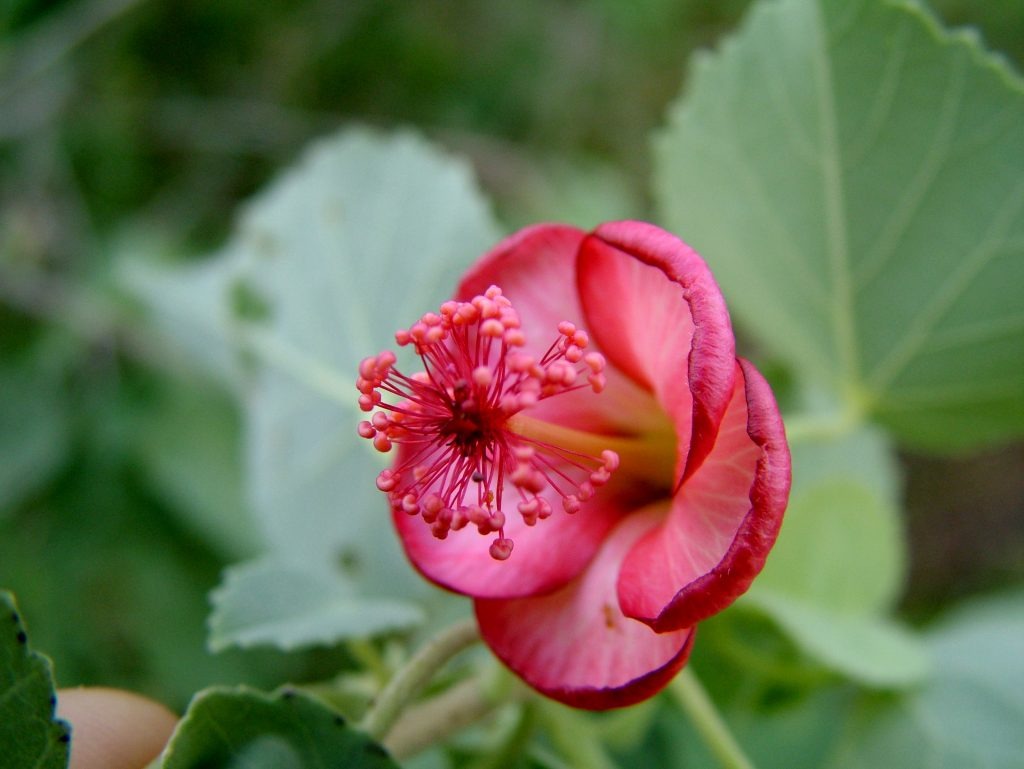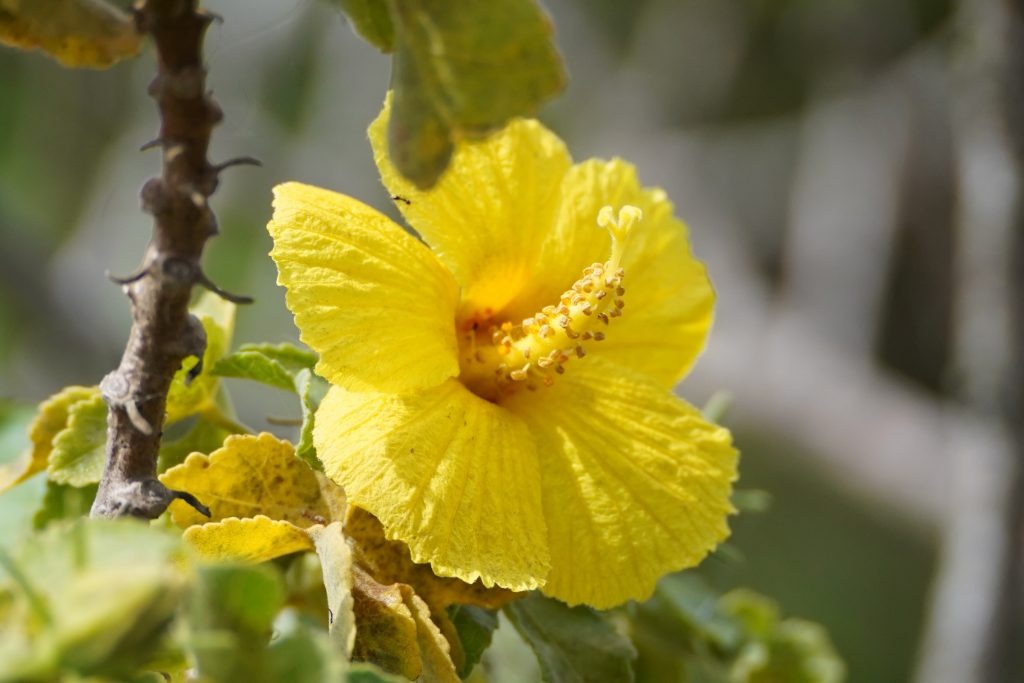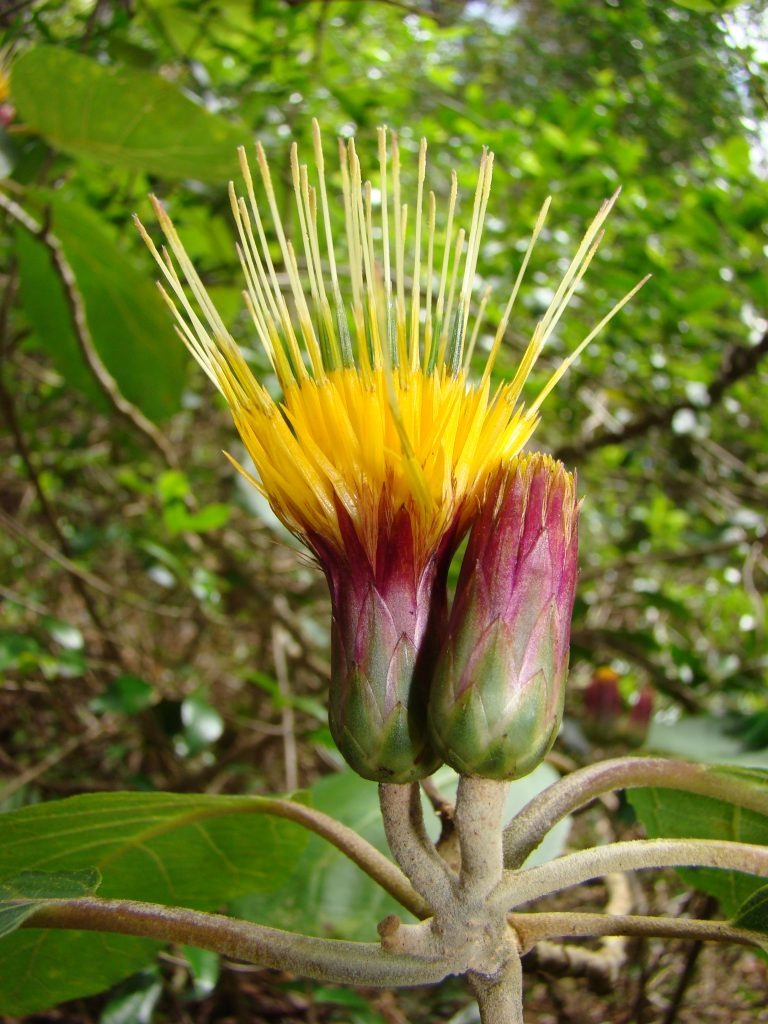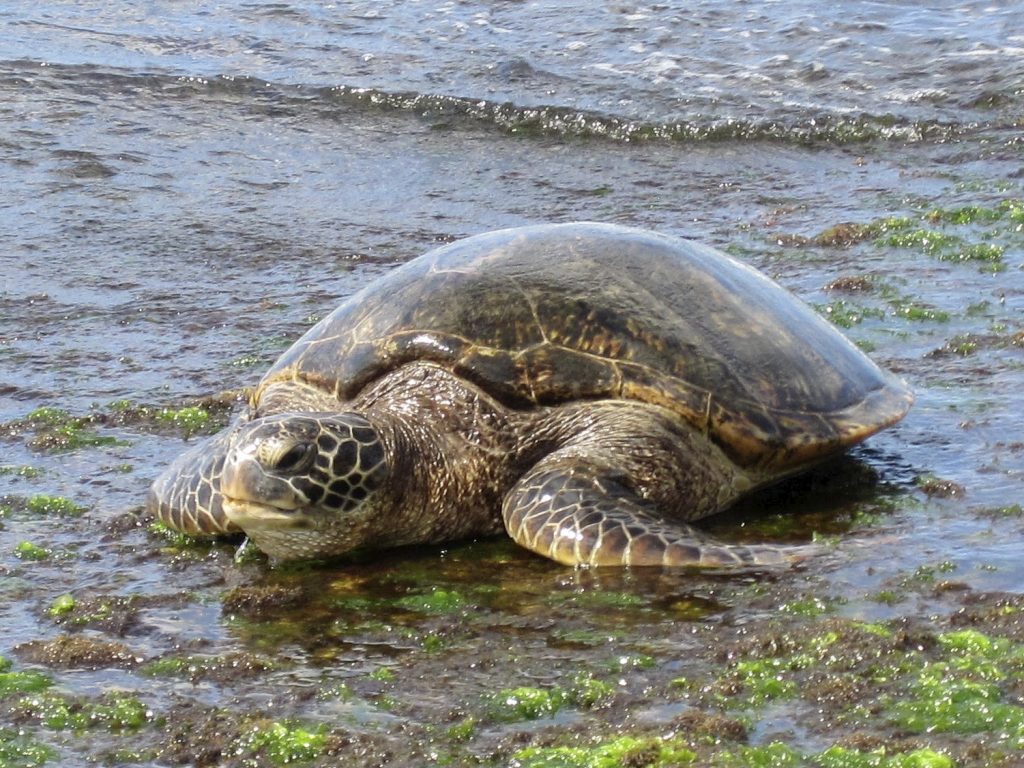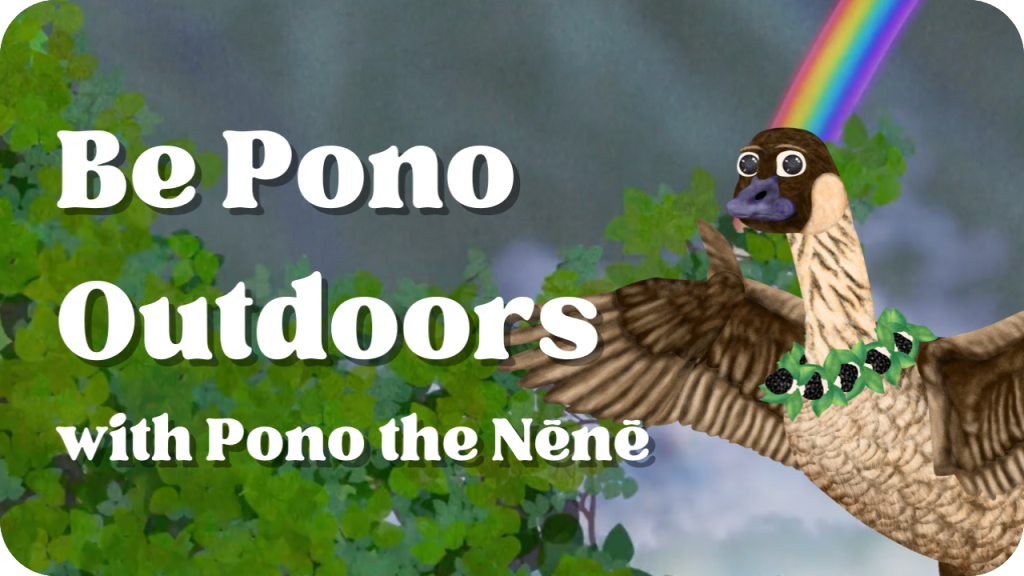Be Pono Near Theatened & Endangered Species
We share our island home with threatened and endangered species that were here long before us. It is our responsibility to be careful around at-risk species and minimize any impacts we have on them, so we can keep wildlife wild and ensure that Hawaiʻi’s natural and cultural resources will be here in the future.
Whether you’re a resident or a visitor to Hawaiʻi, here are some guidelines you can use to be pono around threatened and endangered species. We also have some broader guidance about being pono in any outdoor area. The threats listed below are focused on those that arise from people being in the same spaces as threatened and endangered species. There are other, broader threats to these species (like climate change, pesticide use, or avian malaria) that you can learn about by visiting the species profiles linked below.
Negatively impacting these species in any way is also against state and federal law. If you see species in distress or witness people harming them, call the DLNR Division of Conservation and Resources Enforcement (DOCARE) right away at 808-643-DLNR, or make a report through the DLNRTip app.
|
Quick tips:
|
Click a button below to learn how to be pono near these at-risk species:
Endangered Hawaiian Waterbirds
At-risk species: Nēnē, aeʻo, ʻalae ʻula, ʻalae keʻokeʻo, and koloa maoli.
Hawaiian waterbirds live in and around our wetland areas, including in grassy areas within our communities. The nēnē is our state bird and nearly went extinct in the mid-1900s, but have rebounded thanks to careful conservation work and increased awareness. Click here to learn more about waterbirds.
Threats to waterbirds include:
- Ingesting unsafe food, including cat food or human food given to them on purpose or left outside
- Vehicle strikes, especially in areas where they have become habituated to being around people
- Predation by cats, rats, mongoose, and dogs
- Habitat loss and changes in hydrology.
Be pono near waterbirds:
- Don’t feed wildlife, and don’t leave food for other animals (including cats) outside. This can make birds sick and habituated to being around people.
- If birds approach you, slowly move away, or pause and wait for the birds leave the area of their own accord.
- If a nest is discovered at any point, please call the nearest Forestry & Wildlife office.
- Keep cats indoors and dogs on a leash
- Cover any outdoor trash receptacles.
- Construction projects that include water features that might attract birds should consult with Forestry & Wildlife and take actions to minimize predator presence.
Threatened & Endangered Seabirds
At-risk species: Manu-o-Kū, ʻuaʻu, ʻaʻo, and ʻakēʻakē.
Hawaiʻi’s seabirds rely on our coastal habitats for nesting and rearing young. Some seabirds nest on or under the ground, making them particularly vulnerable to disturbance. Manu-o-Kū are unique because they lay eggs (without building a nest) in trees in our communities and urban centers, including downtown Honolulu. Our enjoyment of beaches, coastal parks, and community trees must include awareness of threats to our native seabirds. Click here to learn more about seabirds.
Threats to seabirds include:
- Nest disturbance, including potential crushing of underground nests when people walk over burrows
- Tree trimming and removal (for manu-o-Kū)
- Predation from dogs, cats, rats, and mongoose
- Artificial lighting. Seabirds navigate at night by moonlight and are disoriented by artificial lighting. This can result in collisions with powerlines or buildings that cause the bird to fall from the air, known as seabird fallout. Seabird fallout season is roughly September 15 through December 15.
Be pono near seabirds:
- Keep cats indoors and dogs on leashes in coastal areas. Never let your dog off-leash at the beach or in a coastal park.
- Watch where you step! Sand dunes and other coastal habitats may be home to nests above or below ground.
- Use seabird-friendly lighting at your home or business
- Report downed seabirds and, when appropriate, help take them to rehab facilities
- Look for nests or birds before trimming or cutting trees. Trees that are home to manu-o-Kū are often flagged with warning tape. Do not trim or cut trees with native birds. If a nest is discovered, contact DLNR Forestry & Wildlife.
- Construction projects operating at night should consult with DLNR Forestry and Wildlife.
Threatened & Endangered Forest Birds
At-risk species: ʻakikiki, ʻakekeʻe, puaiohi, ʻiʻiwi, Oʻahu ʻelepaio, kiwikiu, ʻākohekohe, Hawaiʻi ʻamakihi, ʻakiapōlāʻau, ʻakepa, ʻalawī, palila, pueo, and iʻo.
Hawaiʻi’s native forest birds are jewels of the forest. They are only found in Hawaiʻi, and many are only found on a single island. Many of our native forest birds are so rare that you may not interact with them, but if you are fortunate enough to be near a forest bird, it is important to be aware of the threats they face and how you can help. Click here to learn more about forest birds.
Threats to forest birds include:
- Mosquitoes and avian malaria
- Predation by cats, rats and mongoose
- Habitat loss
Be pono near forest birds:
- Reduce standing water in your yard (e.g., bromeliads, buckets, old tires) to remove mosquito breeding habitat
- If cutting trees or vegetation on your land, survey for native birds first. This is especially important for iʻo during their breeding season, March to September. Remember that pueo, unlike most owls, are active during the day. Any native bird nests found should be reported to DLNR Forestry & Wildlife
- Keep cats indoors
- Keep your distance and avoid using loud sounds in forests
- Follow our Ethical Birding Guidelines
ʻŌpeʻapeʻa (Hawaiian hoary bat)
ʻŌpeʻapeʻa is our official state land mammal. It is also our only native land mammal. They usually roost in trees 1 to 9 meters (3-29 feet) off the ground. They roost during the day and leave to forage around sunset. They eat native and non-native night-flying insects like moths, beetles, crickets, mosquitoes, and termites.
Threats to ʻōpeʻapeʻa include:
- Collisions with structures
- Roost disturbance,
- Predation
Be pono near ʻōpeʻapeʻa:
- During birthing and pup-rearing season (June 1 through September 15), trees and other woody plants taller than 15 feet should not be disturbed, removed, or trimmed.
- Avoid using barbed wire in construction. Bats can become ensnared and killed by barbed wire fencing.
- If you see ʻōpeʻapeʻa, record your ʻōpeʻapeʻa observations on iNaturalist to help us identify bat habitat
Threatened and Endangered Invertebrates
At risk species: kāhuli (land snails), Blackburn’s sphinx month, pinapinao (damselflies), nalo meli maoli (bees), Kauaʻi cave arthropods, anchialine pool shrimp
Hawaiʻi has over 6,000 species of native invertebrates (e.g., insects, snails, and arachnids), all of which are found nowhere else in the world. Some of these species occur in our coastal habitats (like nalo meli maoli), wetlands (like pinapinao), or forested areas (like kāhuli) where they be disturbed by humans. Click here to learn more about native invertebrates
Threats to invertebrates are largely from broader issues like climate change and predation from invasive species. Some of the threats that might arise from human presence in their habitat include:
- Habitat loss
- Disturbance
Be pono near invertebrates:
- If you own forested land, survey for land snails, native insects, and arthropods before cutting vegetation. Tree tobacco is particularly important to Blackburn sphinx month.
- If you own coastal land, survey for nalo meli maoli before removing coastal vegetation like naupaka
- Finding kāhuli or native insects in the wild can be an amazing experience, but do not disturb them.
Threatened & Endangered Plants
At risk species: Around 400 plant taxa. For examples, visit our rare plant species profiles.
The Hawaiian Islands are home to amazing array of unique plants. Today it is estimated that there are approximately 1,400 vascular plant taxa (including species, subspecies, and varieties) native to the State of Hawai‘i, and nearly 90 percent of these are found nowhere else in the world. Click here to learn more about rare plants.
Threats to rare plants
- Wildfire
- Invasive plants
- Invasive rats and hoofed animals
- Damage from humans
Be pono near rare plants:
- Follow our Rare Plant Code of Conduct: keep your distance, don’t share rare plant locations, don’t collect material, and respect relevant laws.
- Clean your hiking gear before entering forests to avoid transporting invasive seeds or Rapid ʻŌhiʻa Death.
Sea Turtles
At-risk species: honu (green), honuʻea (hawksbill), leatherback, loggerhead, and olive ridley
Sea turtles are managed by the DLNR Division of Aquatic Resources with help from federal partners and non-profit agencies. Click here to visit DAR’s website and learn more about sea turtles.
Threats to sea turtles include:
- Crushing: sea turtles and their eggs can be crushed when people drive on beaches. Sometimes the eggs may still hatch, but the turtles may be unable to dig their way out from the compacted sand
- Beach fires and artificial lighting: bonfires on the beach at night or bright white lights near the beach can disorient baby turtles who are trying to use moonlight to find their way to the water or mama sea turtles who are trying to come on shore to nest
- Attacks by dogs
- Collisions with vessels
- Human disturbance: intentional killings and disrupting basking (resting) sea turtles by touching or harassing them on land or chasing them in the water
- Entanglements with fishing gear or other marine debris
- Natural threats: predation from seabirds, crabs, sharks, and large fish.
Be pono near turtles:
- Follow DAR’s guidelines on safe boating, safe wildlife viewing, and reporting incidents with protected marine species.
- No bonfires on beaches
- Replace white lights with the lowest wattage amber, orange, or red LED
- Never drive on the beach
- Do not move beach sand during nesting season (roughly April through October)
- Keep all pets leashed
- Give at least 10 feet of distance between yourself and sea turtles, in and out of the water
- If you are a fisher, please consider using barbless circle hooks to mitigate interactions
- Please report any injuries, entanglements or deaths or if you believe a mama sea turtle is nesting to the statewide marine animal hotline number (888) 256-9840.
Monk Seals
ʻIlio-holo-i-ka-uaua (Hawaiian monk seals) are managed by the DLNR Division of Aquatic Resources, alongside federal partners and non-profit agencies. Click here to visit DAR’s website and learn more about monk seals.
Threats to monk seals include:
- Attacks by dogs
- Human disturbance: Intentional killings and disrupting resting monk seals by touching or harassing them on land or chasing them in the water
- Toxoplasmosis, a parasitic disease carried by cats
- Entanglements with fishing gear or other marine debris
- Natural Predation: Sharks and attacks from other monk seals
Be pono near monk seals:
- Follow DAR’s guidelines on safe boating, safe wildlife viewing, and reporting incidents with protected marine species.
- Keep all pets leashed
- Give at least 50 feet of distance between yourself and monk seals, in and out of the water and 150 feet when moms are nursing pups
- If you are a fisher, please consider using barbless circle hooks to mitigate interactions
- Please report any injuries, entanglements or deaths and all sightings of Hawaiian monk seals to the statewide marine animal hotline number (888) 256-9840
Mahalo for sharing space and caring for our threatened and endangered species.
For more tips on being pono when hiking, camping, or collecting outdoors, visit our Be Pono Outdoors page at the link below.
